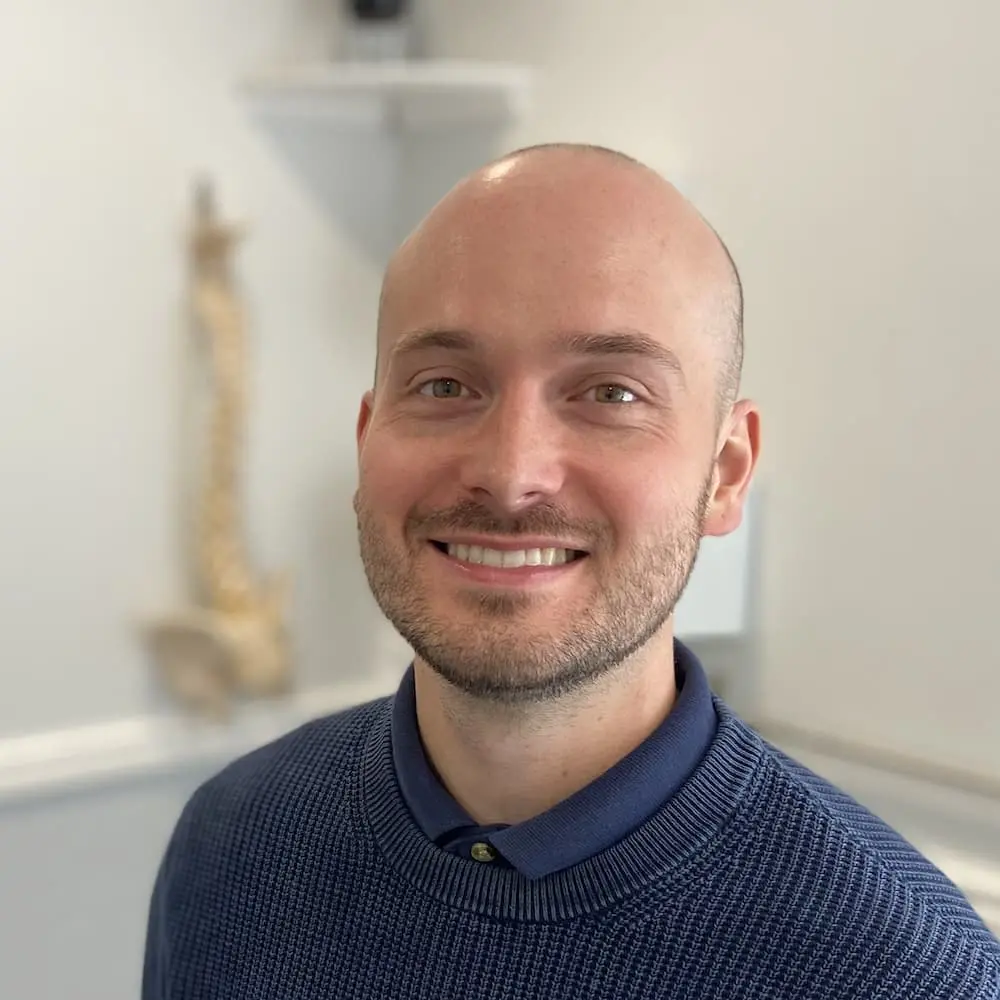Back Pain
What are some conditions associated with back pain?
Back pain can be caused by a variety of conditions, ranging from mild to severe. Here are some common conditions associated with back pain:
- Muscle Strain: Overstretching muscles or ligaments supporting the spine can lead to muscle strain. This can occur due to lifting heavy objects, sudden movements, or poor posture.
- Facet joint irritation: discomfort or inflammation in the small, paired joints located on the sides of the vertebrae in the spine. These joints facilitate spinal movement and can become a source of pain when irritated or damaged.
- Herniated Disc: Also known as a slipped or ruptured disc, this occurs when the soft inner material of a spinal disc protrudes through the tough outer layer, pressing on spinal nerves and causing pain.
- Spinal Stenosis: This condition involves the narrowing of the spinal canal, which can put pressure on the spinal cord and nerves, resulting in pain, numbness, and weakness.
- Scoliosis: Abnormal curvature of the spine can cause pain, especially if the curve is severe or affects posture.
- Ankylosing Spondylitis: An inflammatory condition that primarily affects the spine, causing pain and stiffness. It can lead to the fusion of spinal bones over time.
- Spinal Fractures: Compression fractures of the vertebrae, often due to osteoporosis, can result in sudden and severe back pain.
- Cauda Equina Syndrome: This is a rare but serious condition where there’s pressure on the nerves at the base of the spinal cord. It can cause severe back pain, along with numbness and weakness in the legs and issues with bladder and bowel function.
What are the symptoms of back pain?
The symptoms of back pain can vary depending on the underlying cause and the severity of the condition. Common symptoms of back pain include:
- Pain: The most obvious symptom is pain in the back. The pain can range from a dull ache to a sharp, stabbing sensation. It might be localized to a specific area or radiate to other parts of the body, such as the legs or buttocks.
- Stiffness/Reduced Range of Motion: Back pain can restrict your ability to move your back comfortably, making it difficult to bend, twist, or perform regular activities.
- Muscle Spasms: Muscles in the back can involuntarily contract and tighten, causing muscle spasms that can exacerbate pain.
- Numbness and Tingling: Nerves that are compressed or irritated can lead to sensations of numbness, tingling, or a “pins and needles” feeling in the back or down the leg.
- Weakness: Compression of nerves can result in weakness in the muscles connected to those nerves. This can affect your ability to lift objects, walk, or perform certain movements.
- Sleep Disturbances: Back pain can make it difficult to find a comfortable sleeping position, leading to sleep disturbances and fatigue.
What are some common causes of back pain?
Back pain can be caused by a wide range of factors, both related to specific injuries and underlying medical conditions. Here are some common causes of back pain:
- Muscle Strain or Sprain: Overstretching or tearing of muscles or ligaments supporting the spine due to performing movements you are not used to, lifting heavy objects, or tense posture.
- Injury or Trauma: Falls, car accidents, and other accidents can lead to fractures, sprains, or strains in the back.
- Inflammatory disorders: Wear and tear of joint cartilage, commonly affecting the spine and causing pain and stiffness.
- Herniated Disc: The soft inner material of a spinal disc can affect the shape of an intervertebral disc or protrudes through the tough outer layer. This can often press on spinal nerves and cause pain often referred to as
- Spinal Stenosis: Narrowing of the spinal canal, which can put pressure on the spinal cord and nerves, leading to pain and discomfort.
- Scoliosis: Abnormal sideways curvature of the spine, which can cause back pain and affect posture.
- Kidneys: When kidney infections or kidney stones move into the urinary tract, they can cause pain in the lower back and abdomen.
- Cauda Equina Syndrome: Compression of the nerves at the base of the spinal cord, often due to a herniated disc can cause severe back pain and other symptoms.
What is the best treatment for back pain?
The treatment for back pain can vary depending on the underlying cause, severity of the pain, and individual circumstances. Here are some common approaches to managing back pain:
- Physiotherapy: A physiotherapist can design a personalised exercise program to strengthen the muscles supporting your spine, improve tolerance to the sorts of movements which are flaring back pain.
- Exercise and Movement: Engaging in low-impact aerobic exercises like walking, swimming, or cycling is a gentle way to re-introduce rhythmic movements which can help calm back pain. More focal strengthening can be beneficial for improving tissue tolerance.
- Rest and Activity Modification: In the case of acute back pain, short periods of rest combined with gentle movement can help. Avoid prolonged bed rest, as it can lead to muscle stiffness and worsen the pain.
- Pain Medications: Over-the-counter nonsteroidal anti-inflammatory drugs (NSAIDs) such as ibuprofen can help reduce pain and inflammation. Prescription medications might be recommended for more severe pain.
- Heat and Cold Therapy: Applying heat (e.g., heating pads) or cold (e.g., ice packs) to the affected area can help alleviate pain and reduce inflammation.
- Massage and Manual Therapy: Techniques from a physical therapist or chiropractor can help relax muscles and reduce discomfort when appropriate.
- Ergonomic Adjustments: If poor posture or workplace ergonomics are contributing to your back pain, making adjustments to your seating, workstation, and daily habits can be beneficial.
- Weight Management: Maintaining a healthy weight reduces stress on the spine and can help prevent or alleviate back pain.
Who should I see about back pain?
When you’re experiencing back pain, the appropriate healthcare professional to see will depend on the severity of your pain, any underlying conditions, and your personal preferences. Here are some healthcare providers you might consider consulting for your back pain:
- Physiotherapist: A physiotherapist is often the most effective first line assessment for back pain. They can diagnose the likely issue and design a personalised exercise program to improve your back’s strength, flexibility, and function. They can also provide manual therapy and other techniques to relieve pain.
- General practice doctor: They can assess your symptoms, perform a physical examination, and provide initial recommendations. They might also refer you to specialists if needed.
- Orthopaedic Specialist: If your back pain is related to musculoskeletal issues, such as fractures, herniated discs, or joint problems, an orthopaedic specialist can provide specialised evaluation and treatment options.
- Rheumatologist: If your back pain is associated with inflammatory conditions like ankylosing spondylitis or rheumatoid arthritis, a rheumatologist can offer expertise in managing these conditions.
- Neurologist: For nerve-related issues like sciatica or other neurological symptoms, a neurologist can diagnose and treat conditions affecting the nervous system.
- Pain Management Specialist: If you have chronic or severe pain, a pain management specialist can provide a comprehensive approach to pain relief, which may include medications, injections, and other therapies.
Is exercise good for back pain?
Yes, exercise can be beneficial for most people with back pain. When done correctly and under appropriate guidance, exercise can help alleviate pain, improve mobility, strengthen muscles, and reduce the risk of future episodes of back pain. However, it’s important to approach exercise for back pain with caution and follow recommendations from healthcare professionals, especially if you’re dealing with a specific condition or injury.
- Exercise and Movement: Engaging in low-impact aerobic exercises like walking, swimming, or cycling is a gentle way to re-introduce rhythmic movements which can help calm back pain.
- Mobility Exercises: For severe cases of lower back pain, gentle mobilising exercises can be extremely helpful for reintroducing movement.
- Tailored exercise: We often develop back pain because we are asking our backs to do more than they are strong or conditioned enough to tolerate. This means they often need to be conditioned for the specific forces and movement they are being exposed to. An experienced physiotherapist is often the best-placed to offer this.
- Gradual Progression: Start with gentle exercises and gradually increase intensity and duration. Avoid pushing yourself too hard, especially if you’re just starting or dealing with acute pain.
- Listen to Your Body: If an exercise causes increased pain or discomfort, stop immediately. It’s important not to push through pain.
- Balanced Approach: Include a variety of exercises that target different muscle groups to promote balanced strength and flexibility.
- Stay Active: Regular physical activity can help reduce risk of developing back pain in the long run by keeping your muscles and joints healthy and maintaining a healthy weight.
Will I need surgery for back pain?
Whether or not you will need surgery for back pain depends on several factors, including the underlying cause of your pain, the severity of your symptoms, and how well you respond to conservative treatments. Surgery is typically considered a last resort after other non-surgical treatments have been explored and have not provided sufficient relief. Here are some points to consider:
- Specific Structural Issues: Surgery might be recommended if your back pain is caused by a specific structural issue that can be addressed surgically, such as a herniated disc, spinal stenosis, or a vertebral fracture.
- Neurological Symptoms: If your back pain is accompanied by neurological symptoms like weakness, numbness, or difficulty controlling bladder or bowel function, urgent surgical intervention might be necessary to prevent further damage.
- Failed Non-Surgical Treatment: If you have tried various non-surgical treatments over a considerable period of time and your pain remains unmanageable, your healthcare provider might consider surgical options.
- Quality of Life: The decision to undergo surgery should also take into account your overall quality of life and how your back pain is affecting your ability to function and participate in daily activities.
Chews Health Top Tip for back pain
Our Specialists
Posted onTrustindex verifies that the original source of the review is Google. Tennis elbow pain issue resolved in 3 physio - therapy sessions with Richard Saxton. Back to Badminton and Cricket as normal. Many thanksPosted onTrustindex verifies that the original source of the review is Google. I was referred to Chews Health for shockwave therapy for long term IT Band syndrome. Jon Shurr was excellent at talking me the through the process, setting my expectations and listening to my concerns. I just expected to receive the intervention with Jon but what I actually got was a patient-centred, holistic approach to my condition. Jon was excellent at setting physical challenges to test my knee pain and amending approaches when needed. Having completed my course of shock wave therapy I am feeling the improvements and continue to challenge my knees!! I am so pleased with the success of this therapy and am very grateful to Jon.Posted onTrustindex verifies that the original source of the review is Google. Outstanding care and a well-tailored set of stretches and exercises to address my problems and to keep me in shape. Thank you, Jack!Posted onTrustindex verifies that the original source of the review is Google. I have had a great experience here. I went for a knee injury and they’ve helped me so much build my strength back up. I would definitely recommend. The staff are lovely and really care about your improvements and your injury. Very thankful!Posted onTrustindex verifies that the original source of the review is Google. Highly recommended. My Physio (Jack initial assessment and follow up with Fio) completely understood the issue and worked with me to fix the issue. Thanks for you help.Posted onTrustindex verifies that the original source of the review is Google. I would highly recommend Chews Health. I have seen Jon for help with improving muscle strength in my arms and legs. I am in late 70's and presently seeing him every week because of hip pain. The exercises are helping me cope with an ongoing problem. Thank you. DotPosted onTrustindex verifies that the original source of the review is Google. Jack was incredibly helpful in advising on, and treating, my knee injury which was preventing me from training for the Manchester marathon. Jack was able to explain the cause in a really clear way and created a bespoke training and physio plan which enabled me to run the marathon without the level of pain I had been experiencing. Jack has also significantly improved my running form through his advice and the use of the high tech equipment and analysis software available in each session. Thanks to Jack for enabling me to complete the marathon (and enjoy it!) and for continuing to support on my running journey!Posted onTrustindex verifies that the original source of the review is Google. Great service. Jack was honest and straightforward explaining the rationale behind exercises/decisions. Pragmatic approach focused on getting me safely back to sportPosted onTrustindex verifies that the original source of the review is Google. Have waited a few months post-treatment to write a review - just to be certain! Quite simply, I can't recommend these guys highly enough. I went to them with two badly damaged knees (miniscus tears). Having had three arthroscopes over the years, I was completely resigned to needing surgical intervention again. The Chews team had different ideas. After showing me the latest research findings, they assured me my knees could be rehabilitated without a scalpel. I had just a handful of sessions with them and am delighted to report that, six months on, my knees are great! I'm running 5k twice a week (don't laugh, I loathe running and am no spring chicken) without any pain and have taken up tennis. Everyone at Chews is passionate about their subject, knowledgeable, reassuring and friendly. I wouldn't go anywhere else.Posted onTrustindex verifies that the original source of the review is Google. Couldn’t recommend Chews health enough. Jack’s experience and expertise allowed me to identify my problems and gradually build the strength and ability to return to running pain free.Google rating score: 5.0 of 5, based on 116 reviews




